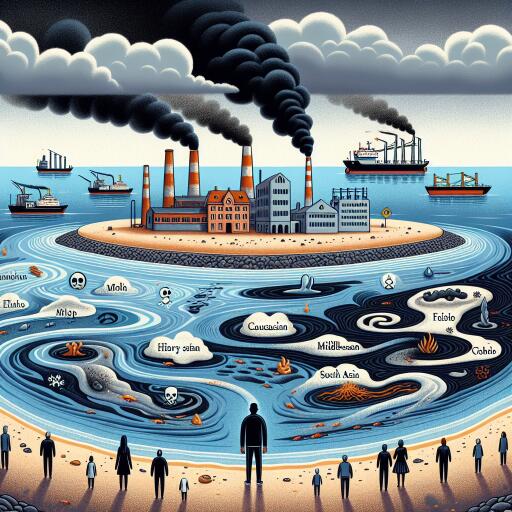
Decades of Damage: Humans Are Contaminating the Baltic Sea With Toxic Metals
The serene waters of the Baltic Sea, a crucial marine environment known for its unique biodiversity, are under an insidious threat. Recent investigations have shed light on a worrying trend: the significant contamination of the sea with thallium, a toxic metal that poses a substantial risk to marine life and potentially humans. Scientists from leading research institutions have unveiled findings that reveal a concerning trajectory of pollution spanning the last 80 years, attributing a large portion of this contamination to anthropogenic, or human-made, activities.
The study focused on the presence of thallium in the environment, a metal that, despite being found in low concentrations in the Baltic Sea’s seawater currently, has the potential to become a major ecological concern. Thallium is notoriously known for its toxicity to mammals, including humans, making the findings particularly alarming. The research elaborates on how a significant hike in thallium levels began around the mid-20th century, highlighting the role of human enterprises in escalating the metal’s presence in the marine ecosystem.
Thallium’s journey into the Baltic Sea is closely linked to various industrial and agricultural practices. Remarkably, the study points to the intensification of cement production post-World War II, among other sources such as coal combustion and the mining of pyrite (an iron sulfide), as key contributors to the surge in thallium contamination. This revelation underscores the broader implications of industrial advancement on environmental health, especially concerning the delicate balance of marine ecosystems.
Moreover, the findings underscore the complex relationship between oxygen levels in the sea, the presence of sulfide minerals, and the accumulation of thallium in sediments. The Baltic Sea, known as the largest hypoxic zone caused by human activities, presents a conducive environment for thallium to bind with sulfide minerals and settle in the sea bed. This process, while a natural mechanism, becomes a point of concern when coupled with the prospect of increased oxygenation—either through natural occurrences or as an attempt to mitigate existing anoxia (lack of oxygen) in the sea. Such interventions could inadvertently mobilize thallium, along with other metals like mercury, raising their levels in water and potentially causing bioaccumulation in fish to toxic extents.
The research brings to the forefront the pressing need for a reassessment of industrial practices, particularly in regions surrounding sensitive marine environments like the Baltic Sea. The global rise in cement production, as highlighted in the study, calls for a careful evaluation of environmental safeguards and the implementation of measures to prevent the leaching of harmful substances into nearby waters. Furthermore, the findings advocate for an integrated approach to solving the anoxia issue in the Baltic Sea, one that considers the potential for releasing stored toxic metals into the ecosystem.
This study not only adds another dimension to the ongoing narrative of environmental degradation in the Baltic Sea but also serves as a cautionary tale about the unintended consequences of human activity on our oceans. The rampant contamination with toxic metals such as thallium underscores the urgency of adopting more sustainable practices and policies to safeguard marine life and, by extension, human health. As the scientific community continues to unravel the complexities of marine pollution, it becomes imperative for society to heed these warnings and work towards reversing the decades of damage inflicted upon the Baltic Sea.
With the backing of substantial research funding and the collaborative effort of researchers across various disciplines, there is hope that actionable insights will lead to meaningful environmental stewardship and a future where the Baltic Sea, and other marine ecosystems like it, can thrive free from the shadow of pollution.





Leave a Reply